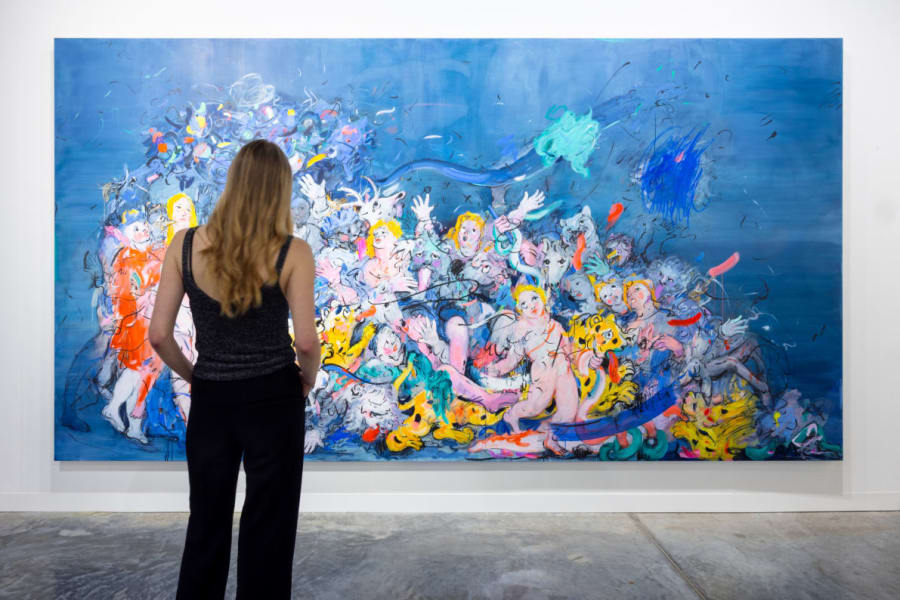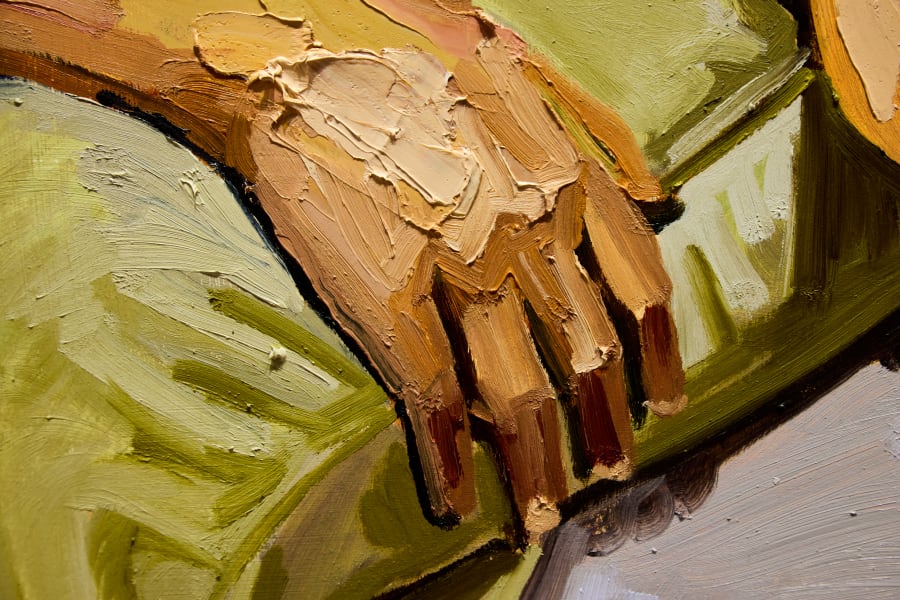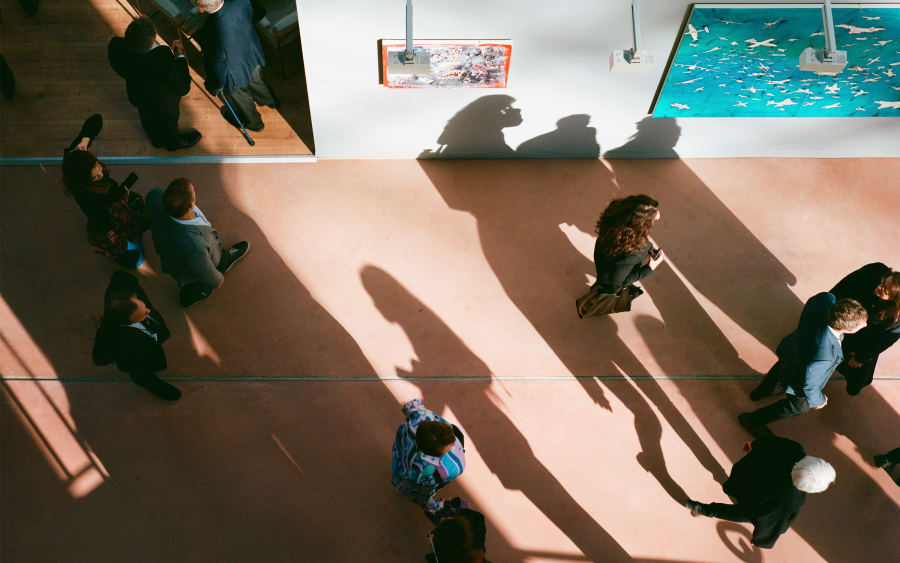Art collectors, particularly the biggest spenders, are buying more and more works by women. That was a headline finding of last year’s Art Basel and UBS Survey of Global Collecting, which reported that the proportion of art by women in the collections of high-net-worth individuals increased significantly, from 33% in 2018 to 44% in 2023.
And it is the highest spenders who are buying the most works by women. According to the report, female artists accounted for 52% of the collections of those spending more than USD 1 million in 2023 and 53% in the first half of 2024. In 2021, that percentage was just 43%. In terms of spend, those who had spent over USD 10 million on art in the first half of 2024 had ‘devoted a considerably larger share of their outlays to female artists (52%) and those spending between USD 1 million and USD 10 million were 50:50.’
It is tempting to draw a link with the growing number of female billionaires, which has increased by 81% globally since 2015 according to another report by UBS. But the data in the Survey of Global Collecting suggests it is a fallacy that women are more likely to buy art by women. The survey’s author, Dr. Clare McAndrew, says: ‘We didn’t find any major differences at all in female versus male spending on artists by gender. I have looked for it for the last few years – it would have made a nice finding – but it wasn’t there.’
Indeed, one high-profile male collector of female artists is Christian Levett, who opened FAMM (Femmes Artistes du Musée de Mougins) in the South of France last June, a private museum containing nearly 100 works by 90 women. A former investment manager, Levett is candid about the economic rationale of his focus: ‘I switched about 10 years ago from collecting antiquities and Old Masters to buying Modern art, and then, in about 2017, I decided to buy female artists only,’ Levett says. ‘It became apparent that it was possible to buy the greatest works of the 20th century by female artists in a way that just wasn’t possible, either physically or financially, to buy male artists.’
He takes the Abstract Expressionists as an example – a great 1950s painting by Joan Mitchell might cost around USD 10 million, but a 1950s Jackson Pollock would be 20 times that. ‘I can afford one or two USD 200 million paintings but I can’t afford to fill a museum with them,’ Levett says. ‘But, I can build a museum level collection of Mitchell, Lee Krasner, Helen Frankenthaler, and Elaine de Kooning.’
For Levett, the museum ‘isn’t there to make any kind of gender, or social, or feminist statement. Some might say that we should never have set up a gender-segregated museum but actually, it’s not about segregation at all, it’s about inclusivity. The opportunity to see female art when most museums are full of men.’
The art advisor Sibylle Rochat is currently working with another male collector who has started to focus on buying contemporary works by women. ‘It happened in an organic way, not because we decided to take that position on women, but because it’s my job as an advisor to find really good and strong artworks for the best budget possible, and that’s what we find now with women artists,’ Rochat says. ‘The price-quality connection seemed very good. It’s value for money, I hate to say that – unfortunately women are often better value for money compared to the extreme prices of trophy works by old white male artists.’
The reasons behind this price lag go beyond market bias, conscious or unconscious. McAndrew points to research which shows that, despite being equally represented at many art schools, because of ‘more rigorous quality filters and other issues faced by female artists throughout their careers, fewer [of their] works reach the market.’ However, ‘the minority that do so sell at a premium rather than a discount for artists at similar levels,’ McAndrew says. So, it is not just the art market’s fault, ‘some of the biases women face in terms of their commercial success relate to institutions and other aspects of their career path – it’s a lack of progress in commercial careers and not simply a gender discount for female versus male artists once they are on the market.’
That said, Pilar Corrias – the owner of the eponymous London-based gallery which represents artists including Tschabalala Self, Christina Quarles, and Vivien Zhang – thinks ‘there’s a massive correction of the canon happening, and institutions are doing a lot of catching up.’ Change is happening from within education too, Corrias says, pointing to professors like Amy Tobin and Alyce Mahon at the University of Cambridge, ‘feminist art historians who are teaching whole generations of young, smart students who will go on and work in the art world and would not dream of omitting women from their studies and exhibitions.’
One new institution setting out to have a collection tilted in favor of women is PoMo, a privately funded Modern and contemporary art museum owned by the Reitan conglomerate that opens this February in Trondheim, Norway, with 60% of its acquisition budget dedicated to female artists. Artists currently in its collection include Louise Bourgeois, Katharina Fritsch, Anne Imhof, and Simone Leigh. ‘If you want all people to feel like PoMo is a museum for them, you should reflect all people in the art that is on show,’ says Monica Reitan, the museum’s chair, of the decision. ‘This was reinforced by available research and surveys of gender balance in the collections of Norwegian public museums, showing a great disparity between male and female artists represented. As we were at the starting point of a whole new collection for PoMo, we could do things differently.’
Societal pressure has doubtless influenced the levelling up of institutional collections and Reitan says that PoMo is ‘happy to be held to account’ by its audience when it comes to representation within its collection. Holding museums to account is the raison d’être of the Burns Halperin Report, a data-led initiative founded by journalists Charlotte Burns and Julia Halperin that examines representation in institutional collections. Their last report in 2022 showed a less progressive view of diversity, both in terms of race and gender: ‘Between 2008 and 2020, just 11% of acquisitions at US museums were of work by female-identifying artists and only 2.2% were by Black American artists,’ Burns and Halperin wrote, arguing that ‘a few high-profile exhibitions and auction results obscured a far more entrenched system of racism and sexism that was not changing anywhere near as quickly as the triumphant headlines suggested.’ So, while Art Basel’s report shows progress within more nimble private collections, institutions are like turning a big ship.
Interestingly, despite their rising spend on female artists, many of the respondents to the UBS and Art Basel survey appear to be largely gender ambivalent. ‘We know there are definitely some collectors who have a strong drive and interest in buying female artists or artists from a specific background to actively support these markets that may have been overlooked,’ McAndrew says. ‘But I have found that the vast majority [based on conversations and more formal research] don’t really have a preference for female over male. They will buy what they see and what’s on offer.’
And perhaps that is it – much of this increase in collection share boils down to opportunities to buy, McAndrew thinks, noting that the representation of female artists by primary market galleries has gone from 36% in 2018 to 46% in 2023. Competition for their work has increased too, Rochat says: ‘I’m fighting every day [for works]. I’m on waiting lists for some artists… For the good ones, the works go so fast.’ And prices, for some trophy names at least, have risen too – the most expensive work sold during the VIP preview at Art Basel Paris in 2023 was a 1996 Louise Bourgeois spider sculpture at Hauser & Wirth, bought by an American collector for USD 22.5 million.
But Corrias, who represents 68% female artists, will not rest on her laurels: ‘If we stop talking about the need for women to be valued alongside men, people will think that everything has been done. The conversation needs to be kept alive, so the canon is properly corrected. And hopefully in time it will be less and less obvious that it’s a correction, it will just be the norm.’
Download the Art Basel and UBS Art Market Report 2024 here
Anna Brady, the former art market editor of The Art Newspaper, is a UK-based writer, editor and speaker. She was previously the features editor of Harper’s Bazaar Arabia and Harper’s Bazaar Art Arabia in Dubai, and diary editor at The Antiques Trade Gazette. Anna has been a regular guest on Monocle Radio and written for publications including Apollo, House & Garden, The World of Interiors, The Evening Standard, The Independent, The New European and Wallpaper.
Caption for top image: Visitors looking at Tschabalala Self’s works presented by Galerie Eva Presenhuber at Art Basel Paris 2024.
Published on January 29, 2025.


